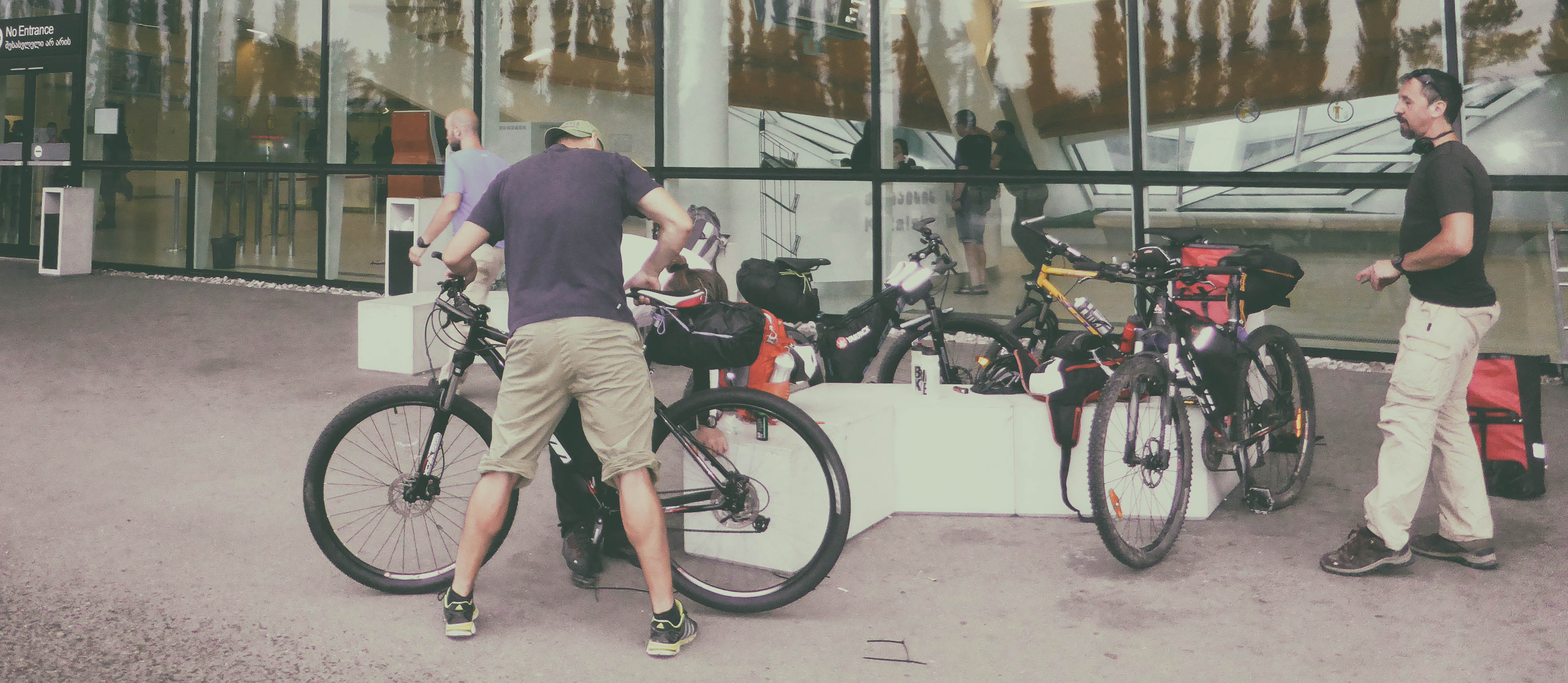Nincsenek termékek a kosárban.
When you go on a multi-day hike with a bike, you must carefully consider what you absolutely need.
I always do things related to bicaj in the first place, because it is independent of the season and the terrain. The most important are the combined tool set, puncture repair set, combined pump, spare outer and inner, eyelet for the chain, brake pads, if there is a spare shift lug, chain oil, knife, cable tie, duct tape, and a few meters of avalanche cord (you can tie anything anywhere). I would also include things related to lighting here: battery pack, charging cords, spare light and headlamp. If we leave for several days behind God's back, in addition to these, it also doesn't hurt to check the bike carefully beforehand and replace the one we are even a little unsure about. Let's start only with perfect brakes. By the way, "we'll set it up" and "just endure" works, we also do it, but when you're 30-40 km away from any place where you could get help, it's better not to risk it.
Everyone has different needs when it comes to gadgets and more. For example, I like to have a normal camera with me, this is complemented by a GoPro and often even a drone. We bought a Bebop 2, it can do everything the big ones do, but it's compact, you can control it with a mobile phone, assemble it in two minutes and it's already flying. If possible, carry a durable phone with an up-to-date road map, and for safety, a paper map and/or a spare phone. Helmet (unfortunately, we handle the issue carelessly).
What is enough for a week is also enough for a month
I tend to save space on clothes. Waterproof pants and a raincoat are a must, they can be packed in the simplest and smallest place possible (the Dekás HUF 2,000 point will do). You definitely need a fleece in your pack, but a thin one and a thicker one don't hurt either. I usually prepare in such a way that I don't despair if I have to roll at night. You won't get cold going uphill or on flat terrain if the bicaj jacket is windproof. Neck warmer, hat, thin fabric and short gloves, or long winter gloves. These are the ones that, of course, depend on the weather, but you still need them anyway. Underwear, T-shirt and trousers depend on the season and how many days you are going. You can also get very thin but absorbent pieces from towels. Looking more closely at the list, it's still a huge amount of stuff.
However, according to experience, it fits in YAKHAS and YAKFAR so that only a small 10-20 liter backpack with a 2 liter camelbag is enough for our backs. Energy bars, magnesium tablets, brandy, things that fit in a small space and give you energy quickly are the best for the trip. By the way, it's rare that we can't find any shop or buffet where we can have a bite to eat all day. Medicines include only the basic ones, painkillers, wound disinfectants, gauze, adhesive plasters, water disinfectants. On the most recent tours, we already started with the new water purification bottles. It's worth every penny. You don't have to worry about dysentery anywhere, it turns any puddle into drinkable water.
This package does not yet include a sleeping bag or tent. If the purpose is not specifically camping, I don't pack it. From spring to autumn, a sleeping bag, an inflatable waist pack, supplemented with any kind of waterproof tarpaulin is enough. You also have to think about the fact that we have to roll up to the top of the mountain with this much litter, sometimes we have to push it, God forbid we lift it, carry it. In Transylvania, we often find summer shepherd's huts and bivouacs, in which we can also relax. We can attach the sleeping bag to the handlebars, where it is not advisable to hang heavy things anyway.
On a plane with Bicaj
On the latter tours in Georgia, another important aspect was the ease of moving the package and its dispatchability, since we went by plane from Pest. Starting from home, this wasn't a problem, we wrapped everything in plastic wrap and that's it, we sent it off as sports equipment, which meant HUF 20,000 extra expenses back there, which isn't terrible, it's more than acceptable.
Things to pay attention to when transporting your bicycle by plane:
- Let the wheels down to around 1 bar
- deflate air bubbles
- to take off the pedals
- loosen the shifter and brake levers and turn them down
- to put a wedge between the brake shoes
- to wrap a sliding stem
- to protect the switch
If we pack the bike well, it is likely that we will be able to take it off the plane safely. On the way back, it is much more problematic, as you may just fall into the airport after a whole day of driving. The last time we had trouble with the airport staff was here. They were unhelpful to say the least. I would have liked to have beaten the comrade packing the suitcase. The bottom line is that if we can't find a missing folpack, we'll definitely miss the plane. I hope that a solution to this problem has been found, and the YAKFLY light bag for transporting bicycles has also been completed, which can be easily converted into a hammock or a bivouac bag so that it is not cumbersome to carry and can be used on the road.

In short, that's all, and of course everyone has different needs, this is just maybe the minimum necessary. To put it bluntly, I've managed to survive everything so far.

